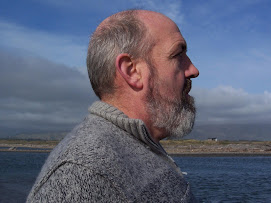December is the month that public servants, at the end of the year, publish the results of their work, and take some time off to spend with their families, knowing that the evidence of their achievements during the year is open for review by the public. Three governments – USA, UK and Australia - released major documents in December, and they give some signposts for the trends that we can expect to see in 2010 and beyond.
On December 22, Australia published Engage – getting on with Government 2.0, the report from a TaskForce set up by the Prime Minister to make recommendations on improving the accessibility, transparency, innovation, and collaboration of government. The report contains an excellent statement of the benefits and challenges of using ICT, particularly social media/web 2.0 tools. The report makes strong recommendations for government action, proposing both policy and operational changes to secure the identified benefits. The Task Force places a high priority on the value of freeing up public sector information (PSI), listing how PSI can be managed as a national resource to deliver increased accountability, economic growth and social benefits). It is particularly encouraging that the Task Force practiced what it preached – with extensive use of the taskforce blog, and community participation during the development of the report. (Disclosure – I was a member of the international reference group).
Earlier in the month, on December 8th, the UK government published Putting the Frontline First: smarter government, which also contains a strong emphasis on the value of opening up government data. The report has a broader aim than the Australian task force, considering how to improve the quality of public services through the use of ICT, devolving more responsibility to the frontline for regional and local services, and streamlining central government. Of particular relevance to readers of FutureGov will be the sections on “Accelerate the move to digitalised public services” (placing the emphasis on increased usage of online services, and a new “Tell Us Once” service), “Radically open up data” (creating a single access point for valuable public datasets, making them free for reuse), and “Harness the power of comparative data“ (using data on frontline performance to drive better performance, by giving citizens and professionals the tools to act as catalysts for change).
Also on December 8, the US government issued the Open Government Directive, which establish a clear action plan for individual government agencies to implement the commitment made by President Obama in his Memorandum on Transparency and Open Government, issued on his first day in office January 21, 2009. In a remarkable year, the Federal US government has demonstrated strong leadership in the use of Open Government to strengthen transparency, participation, and collaboration. Over the coming weeks, I will write about a number of common themes from these three landmark publications; here I discuss just one – Open Government.
All three governments recognise the value of opening up government data (covered in my final post as New Zealand’s Government CIO in April 2009). It is not an exaggeration to nominate Open Government Data as the most important idea of 2009; at the start of the year Open Data was an emerging concept, and each of these end-of-year publications shows how deeply the idea is now embedded in core government policy and operations. More links on this major shift in government policy thinking can be found in this article I wrote last year.
All three reports highlight the importance of engagement between government and citizens to strengthen trust in government, develop better policy, reduce operating costs and release resources for front-line service delivery.
Ensuring that government information is freely available is a foundation concept that has been enacted in legislation in a large number of countries, and a number of governments have also established independent agencies to monitor and oversee the operation of the legislation.
Government agencies are not able to respond to the demands for information – from individuals, the media, businesses and not-for-profit organisations. This is because government is currently operating as a “retailer” of information – using data that has been collected to prepare official reports; government needs to move to being a wholesaler of information, allowing the community to create the reports using government supplied data.
(also posted at http://www.futuregov.net/blog/2010/jan/5/what-next-government-transformation/)






